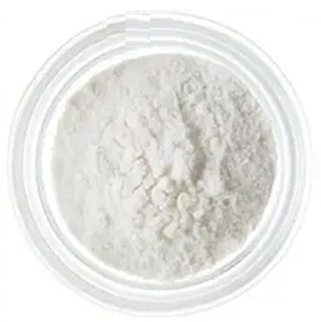We unleash your business potential by maximize the business innovation.
Send EmailYttrium Oxide, Yttria Yttrium Sesquioxide, Yttrium Trioxide, 1314-36-9
Yttrium(III) oxide
Yttrium(III) oxide (Y₂O₃), commonly called yttria, is a high-melting rare-earth oxide valued for thermal stability, chemical inertness, and optical performance. It is a key host lattice for phosphors and a building block for advanced ceramics, lasers, and electronic components.
Chemical identity and key properties
-
Chemical name: Yttrium(III) oxide
-
Formula: Y₂O₃
-
Molar mass: 225.81 g/mol
-
CAS number: 1314-36-9
-
EC number: 215-233-5
-
Appearance: White, fine powder
-
Crystal structure: Cubic bixbyite
-
Density: ~5.0 g/cm³ (bulk density depends on particle size)
-
Melting point: ~2,425 °C
-
Boiling point: ~4,300 °C
-
pH (aqueous suspension): Slightly basic
-
Thermal conductivity (polycrystalline): Low-to-moderate (application-dependent)
-
Electrical behavior: Insulating ceramic
Solubility and reactivity
-
Solubility: Insoluble in water and most organic solvents.
-
Acids: Slowly reacts with strong acids to form yttrium salts; solubility improves with complexing agents.
-
Bases: Generally stable; does not readily dissolve in alkali.
-
Redox: Y₂O₃ is already in a highly stable oxidized state; non-reducible under mild conditions.
-
Compatibility: Chemically compatible with alumina, zirconia, and many refractory oxides.
Production routes and material grades
-
Ore sources: Typically derived from ionic clays and rare-earth ores (e.g., bastnäsite, monazite) after REE separation.
-
Typical process: Acid leaching → REE solvent extraction → precipitation (hydroxide/carbonate) → calcination to Y₂O₃ → milling and classification.
-
Alternative high-purity route: Precipitation from high-purity yttrium nitrate → calcination → controlled atmosphere sintering to minimize impurities.
Available grades and forms
-
Technical grade: 99.9% (3N) for general ceramics and refractories.
-
High purity: 99.99%–99.999% (4N–5N) for phosphors, optics, and electronic applications.
-
Particle sizes: Nano (20–100 nm), sub-micron, micronized (D50 0.5–5 μm), agglomerate-controlled powders.
-
Morphology: Spherical or irregular, depending on synthesis; surface area tailored (BET 5–50 m²/g).
Applications and mechanisms
Phosphors and display technologies
-
Red phosphors: Eu³⁺-doped Y₂O₃ (Y₂O₃:Eu) is a standard red-emitting phosphor (≈611 nm emission) for LEDs and displays, chosen for high quantum efficiency and thermal stability.
-
Other dopants: Tb³⁺ (green emission), Er³⁺/Tm³⁺ (IR/visible upconversion).
Optics and lasers
-
Transparent ceramics: Sintered Y₂O₃ can be made optically transparent for IR windows and high-temperature viewports due to low scattering and high melting point.
-
Laser hosts: YAG (Y₃Al₅O₁₂) and YSGG derive yttrium from Y₂O₃ precursors; dopants (Nd³⁺, Er³⁺, Yb³⁺) enable solid-state lasers.
Electronics and magnetics
-
YIG (Y₃Fe₅O₁₂): Y₂O₃ precursor to yttrium iron garnet used in microwave components and magneto-optical devices.
-
Dielectrics: High-resistivity ceramics for insulating layers and sensor substrates.
Advanced ceramics and thermal systems
-
Zirconia stabilization: Y₂O₃-stabilized ZrO₂ (YSZ) provides high fracture toughness and oxygen-ion conductivity; widely used in thermal barrier coatings and SOFC electrolytes.
-
Refractories: Additive to improve creep resistance and grain boundary stability.
Metallurgy and surface treatments
-
Alloying and inclusions control: Minor yttrium additions (via Y₂O₃ or salts) refine grain boundaries and enhance oxidation resistance.
-
Polishing: As a mild abrasive in specialized optical finishing where alumina or ceria may be too aggressive or chemically reactive.
Specification parameters for procurement
-
Purity: 3N/4N/5N; specify total REE content and specific trace limits (Fe, Si, Ca, Al, Na, Cl, S, Pb).
-
Particle size distribution: D10/D50/D90 or surface area (BET); agglomerate control; sieve residue.
-
Loss on ignition (LOI): Indicates residual hydroxide/carbonate or adsorbed moisture.
-
Moisture content: Karl Fischer or gravimetric; important for sintering predictability.
-
Specific surface area (BET): Critical for sintering and phosphor dispersion.
-
Phase purity: XRD-confirmed cubic Y₂O₃; absence of oxyhydroxides.
-
Whiteness/L-value: For optical/phosphor consistency.
-
Conductivity/ionic purity: For electronic applications (low ionic contaminants).
-
Packaging cleanliness: Low ionic leachables, antistatic controls for nano-grade.
Handling, safety, and compliance
-
Hazards: Low acute toxicity; fine powders can irritate eyes/respiratory tract.
-
PPE: Gloves, safety glasses, FFP2/FFP3 dust mask for nano/submicron powders.
-
Storage: Dry, sealed containers; avoid humidity to prevent surface hydroxylation.
-
Waste: Manage as inert ceramic/rare-earth waste per local regulations.
-
Transport identifiers: Typically non-flammable, non-reactive; check supplier SDS for specific UN classification.
-
Documentation: SDS, TDS, CoA with batch-specific particle size, purity, and trace metals; REACH and RoHS statements if applicable.
Comparison to related oxides
-
Versus ceria (CeO₂): Y₂O₃ is less chemically active (no Ce³⁺/Ce⁴⁺ redox cycling) but offers better high-temperature phase stability for transparent ceramics; ceria excels in oxygen storage and catalysis.
-
Versus alumina (Al₂O₃): Alumina is cheaper and harder as an abrasive, but yttria has higher IR transparency potential and is preferred as a dopant/host in phosphors.
-
Versus zirconia (ZrO₂): Y₂O₃ is the stabilizer; YSZ leverages yttria to achieve toughening and ionic conductivity for thermal barriers and fuel cells.
ERP-ready data block (concise)
-
Product name: Yttrium(III) oxide (Y₂O₃)
-
CAS: 1314-36-9
-
EC: 215-233-5
-
Purity grades: 99.9–99.999%
-
Appearance: White powder, cubic phase
-
Density: ~5.0 g/cm³
-
Melting point: ~2,425 °C
-
Solubility: Insoluble in water; limited acid solubility
-
Forms: Nano, submicron, micronized
-
Applications: Phosphors (Y₂O₃:Eu), transparent ceramics, YAG/YIG precursors, YSZ stabilizer, IR windows
🧾 Yttrium(III) Oxide (Y₂O₃) – Synonyms
Yttrium(III) Oxide is referred to in literature and commercial use by several alternative names. The most common ones include:
-
Yttrium Oxide
-
Yttrium(III) Oxide
-
Yttria (widely used short name)
-
Yttrium Sesquioxide
-
Yttrium Trioxide
-
Y₂O₃ (chemical formula notation)
